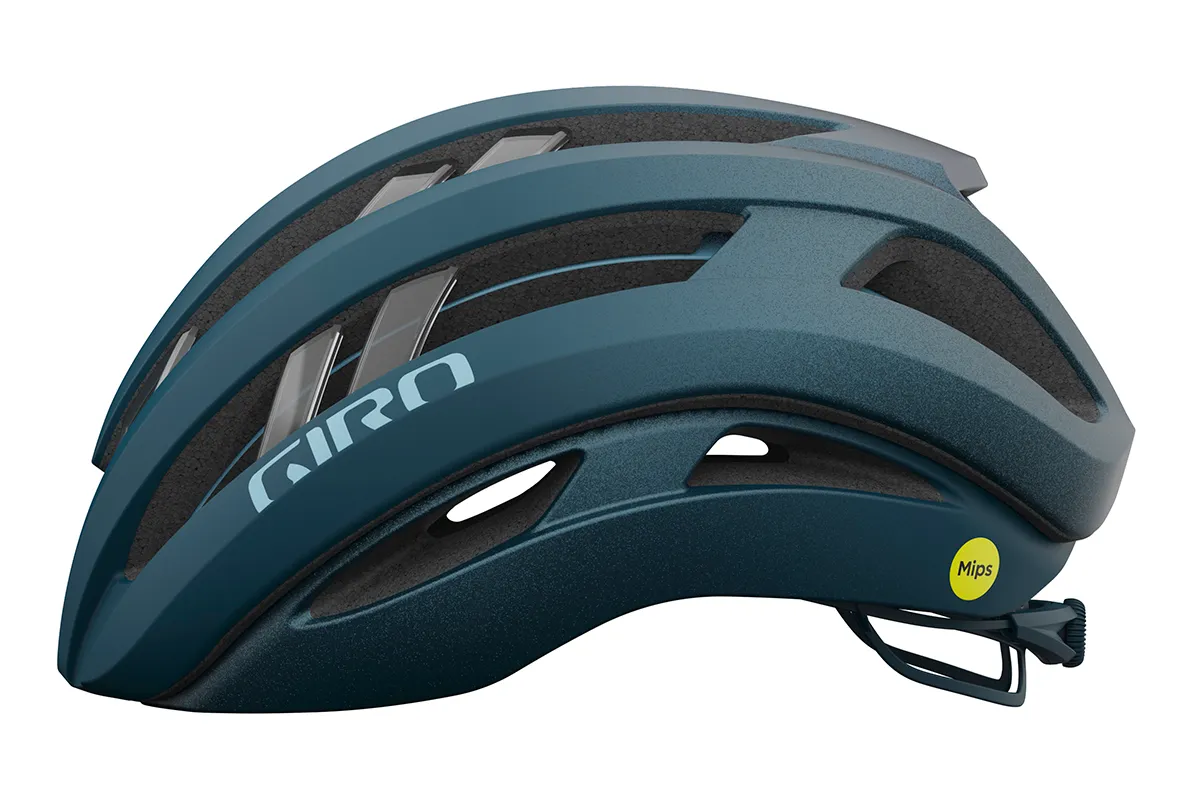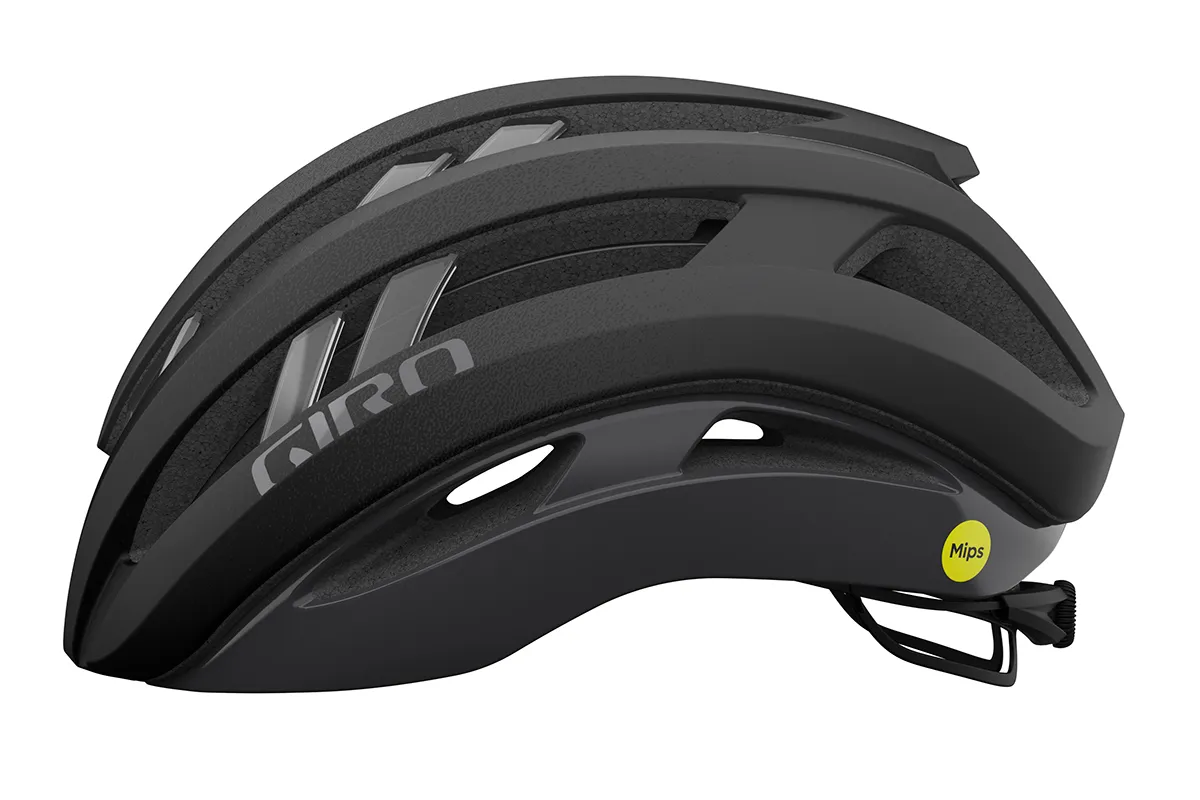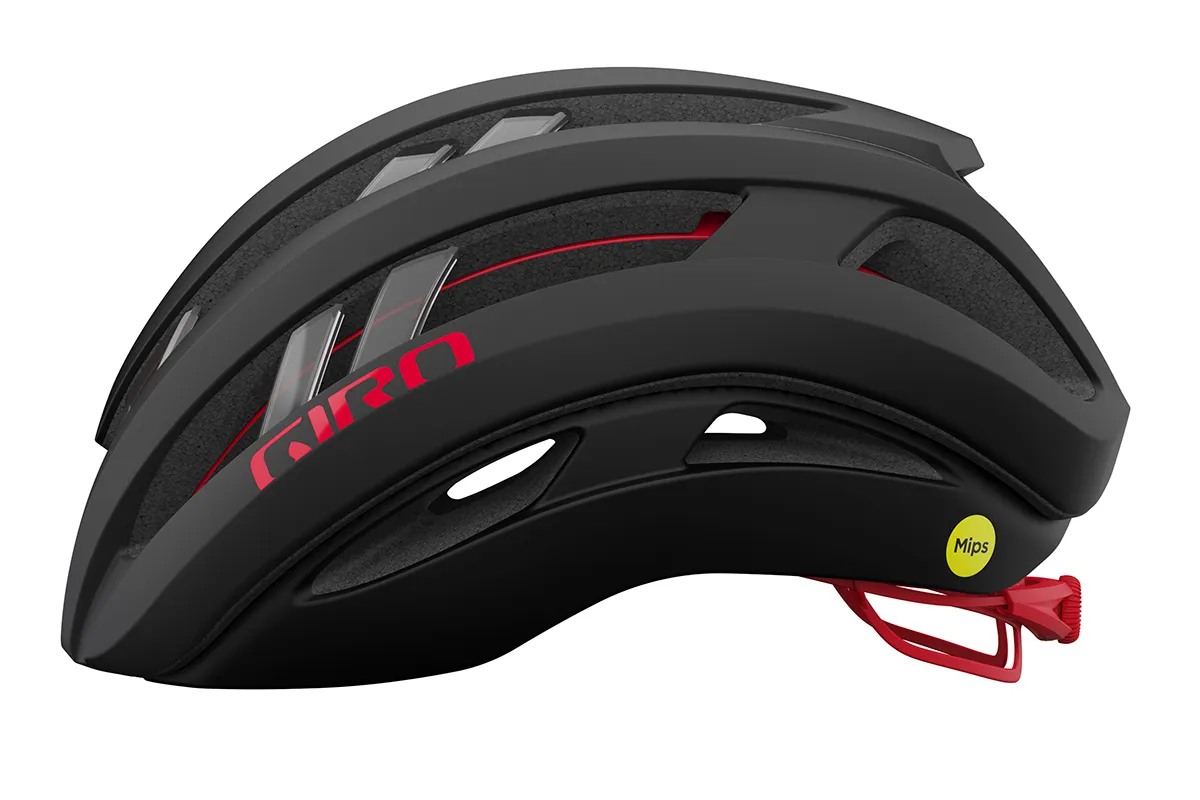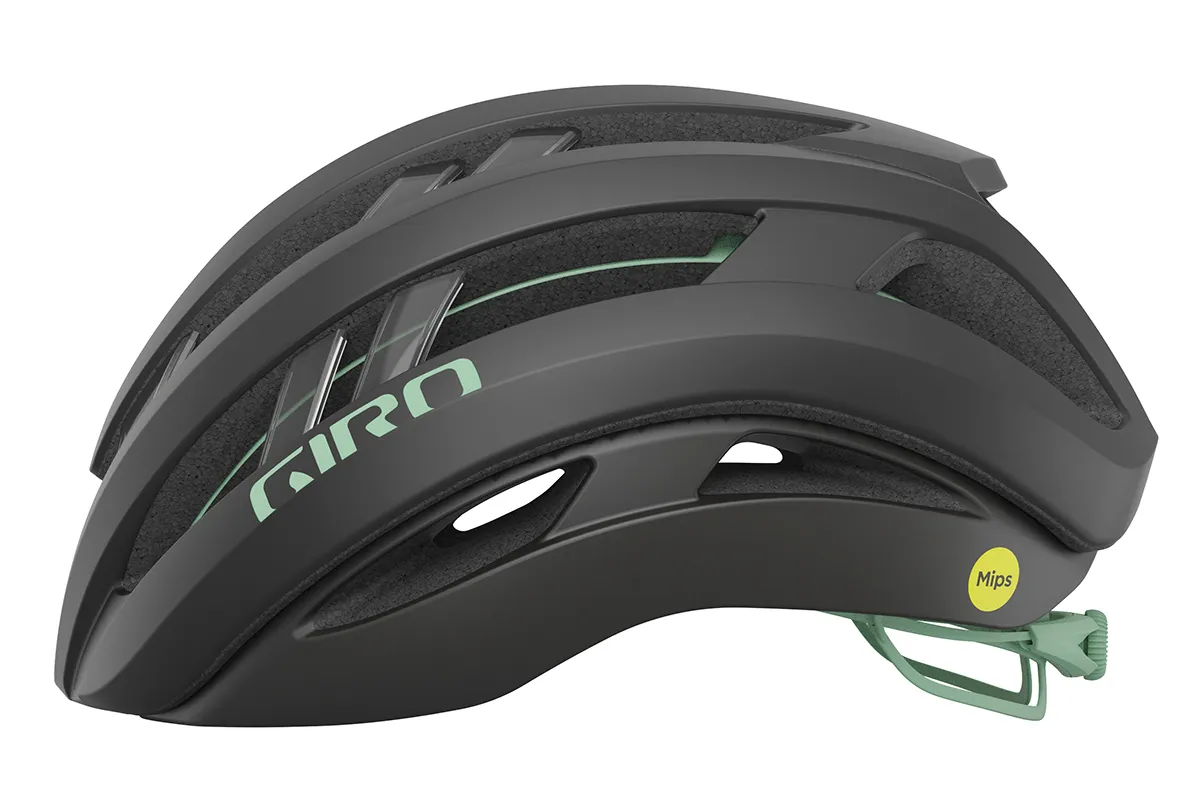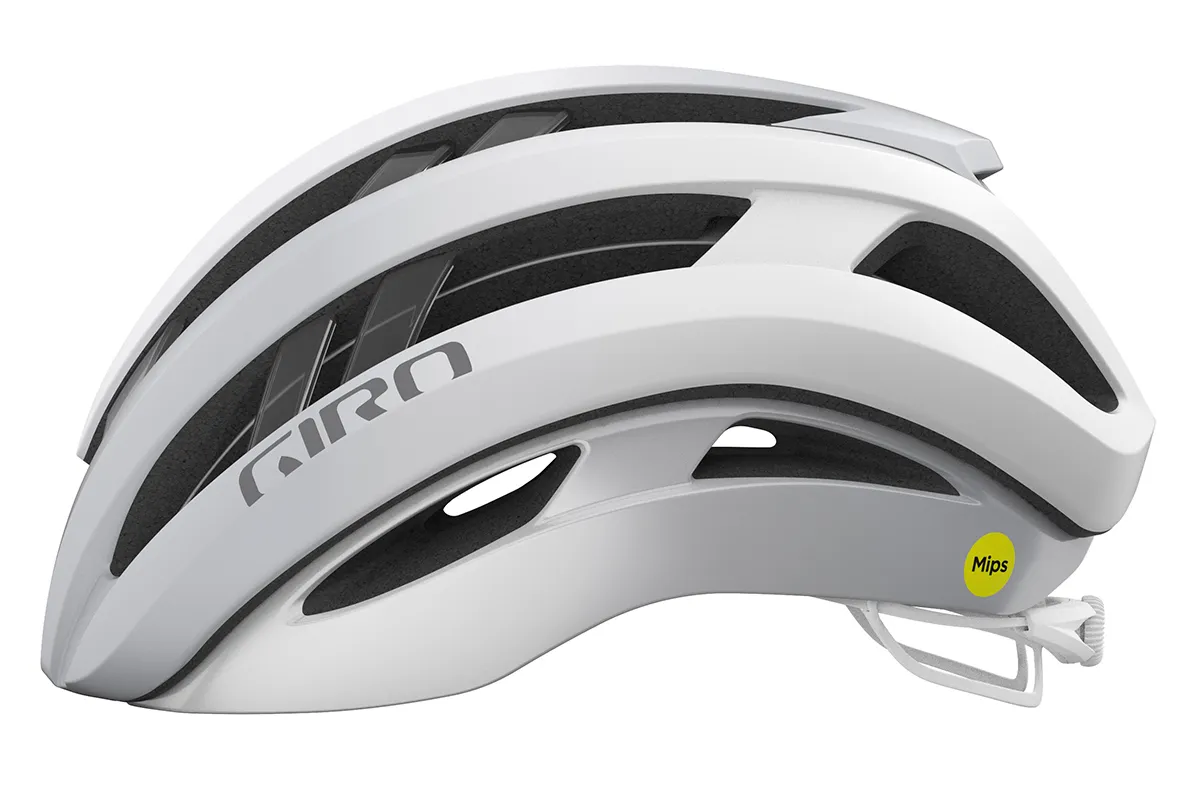Giro says its new Aries is the lightest MIPS Spherical helmet yet and is ranked No.1 for injury risk reduction by the influential Virginia Tech labs.
The Spherical design with MIPS protection was debuted back in 2018, with the Giro Aether. It was refined into a lighter, lower-volume package on the all-rounder Helios lid in 2020.
The brand has set out to improve further on the protection its helmets offer with the Aries.
The goal with the new helmet was to create an improved successor to the Aether that ups the protection, lightens the weight and optimises aero, comfort and cooling.
New Giro Aries helmet – what you need to know
- The lightest Spherical helmet design yet at a claimed 265g (medium)
- Ranked No.1 for injury risk reduction by Virginia Tech labs
- Low volume, smaller overall size than the Aether
- Minimal padding with moisture channeling built-in
- New Aura II reinforcement arch
- 4% aero drag reduction over the Aether
- 2.3% cooler than the Aether
Safety

The Aries is Giro’s latest helmet to include its Spherical technology, which utilises a unique ball-and-socket design employing MIPS Brain Protection System.
Giro’s Spherical system takes the MIPS ‘slip-plane’ idea, but instead of either using a thin liner that sits between the helmet and pads, or anchoring the pads on elastomers, Giro combines two EPS shells. One sits inside the other and they're anchored on elastomer anchors that are ball ended and sit in a socket on the lower shell. This enables uninterrupted 360-degree movement.
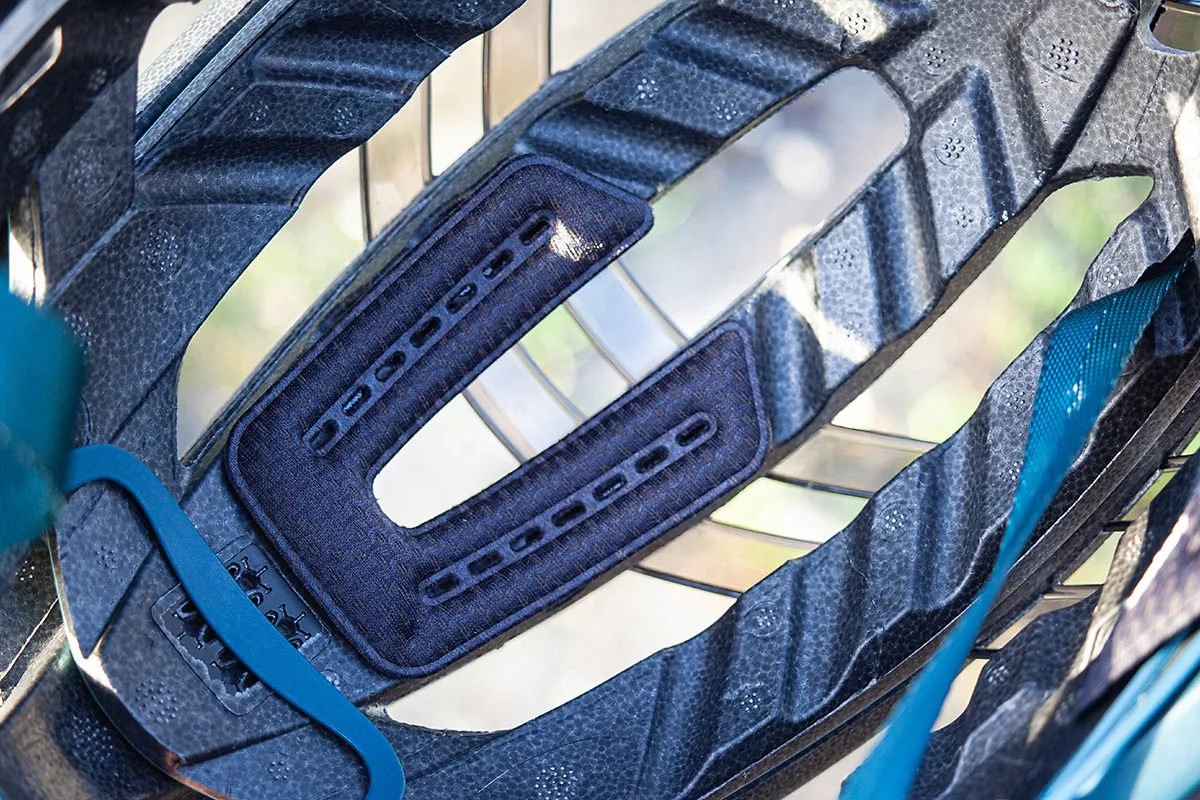
Giro developed the helmets at the DOME labs in its Scotts Valley HQ (with MIPS engineers present).
The two-piece construction of the Aries enables Giro to optimise the protection by using a higher-density EPS foam for the outer to take the initial impact. A lower density on the inner layer cushions and absorbs energy before it reaches your head.
All of Giro’s Spherical helmet designs so far have received the highest 5-star rating from the highly respected Virginia Tech labs and the new Aries continues that trend. In fact, the Aries has become the number one ranked helmet of all those tested by Virginia Tech.
Weight
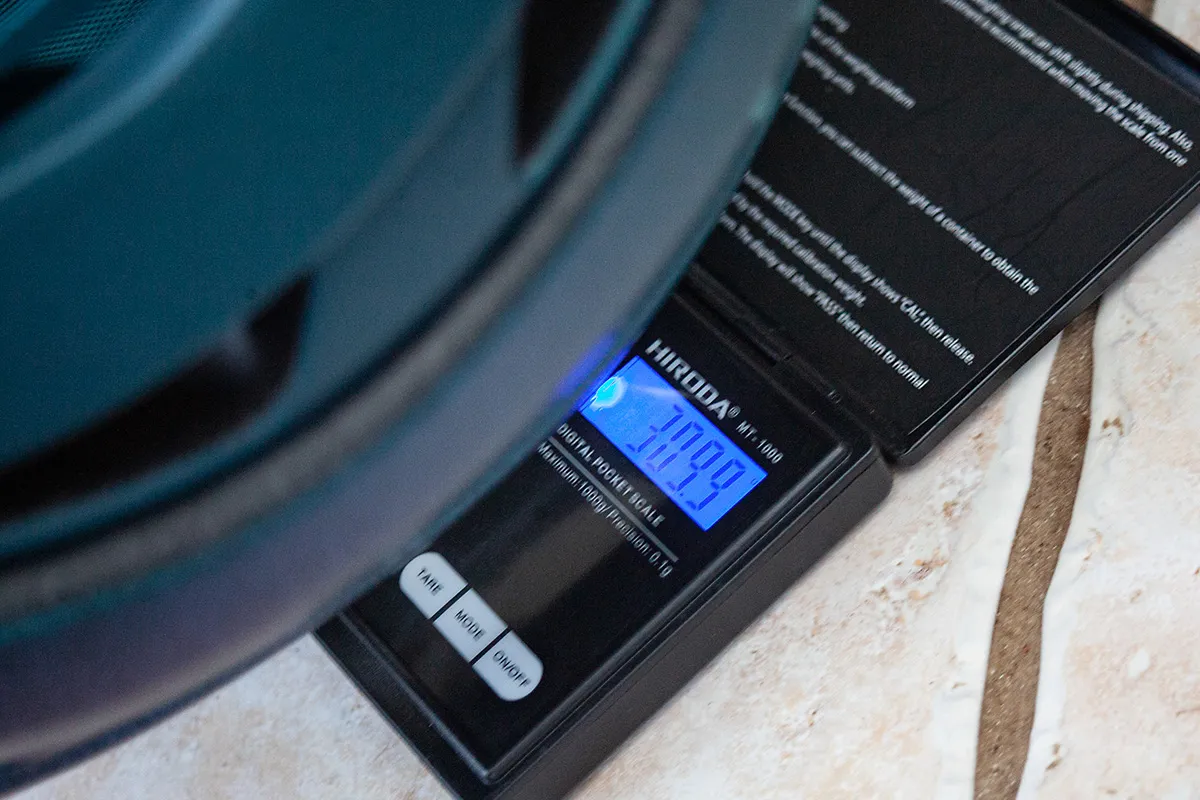
The key element to these improvements has been the development of the AURA II reinforcement arch.
These twin bridges (made from a translucent shatter-proof polymer) are designed to add structural integrity without increasing weight.
Giro claim the Aries has a 5 per cent weight reduction over the Giro Aether at a claimed 265g for a size medium.
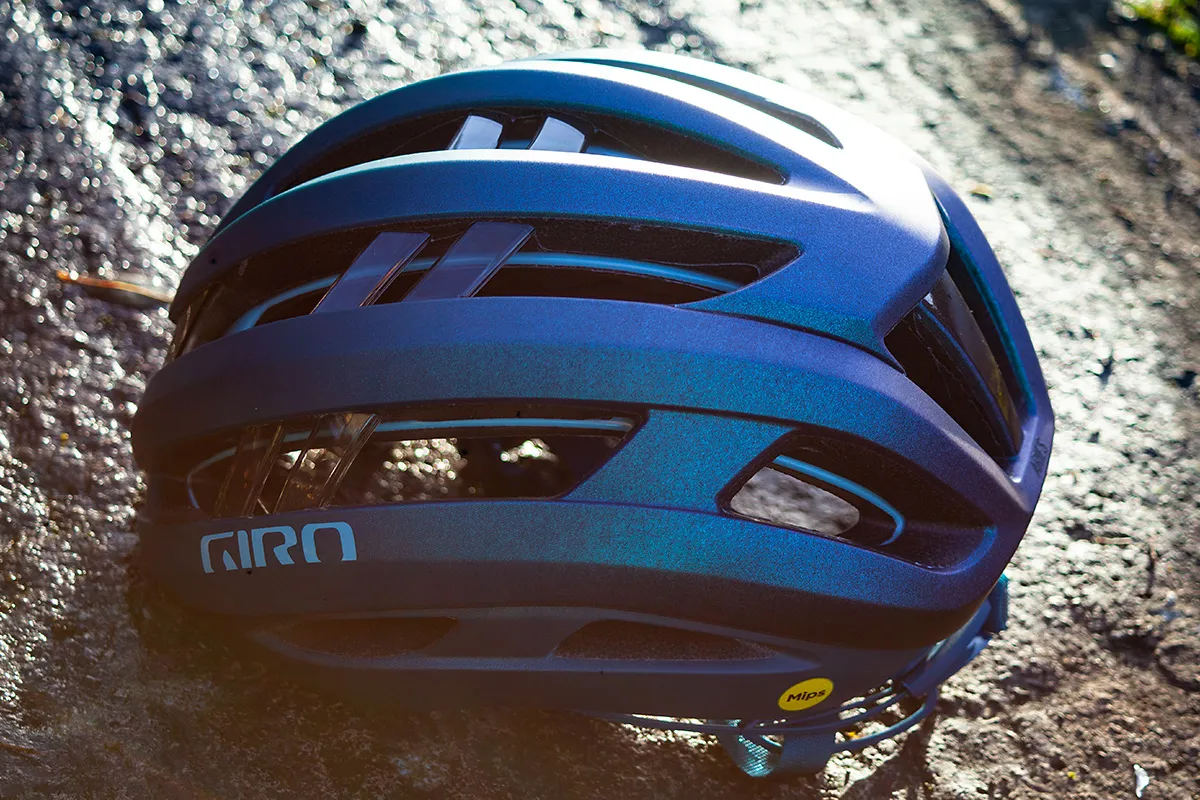
Giro’s all-rounder/gravel helmet, the Helios Spherical, weighs in at 310.8g (size large) and the sample Aries we’ve received is 309.9g in the same size (claimed 300g).
This just about makes the Aries Giro's lightest Spherical offering by the smallest of margins. However, the Helios has much less aggressive venting than the pro-racing destined Aries.
Cooling
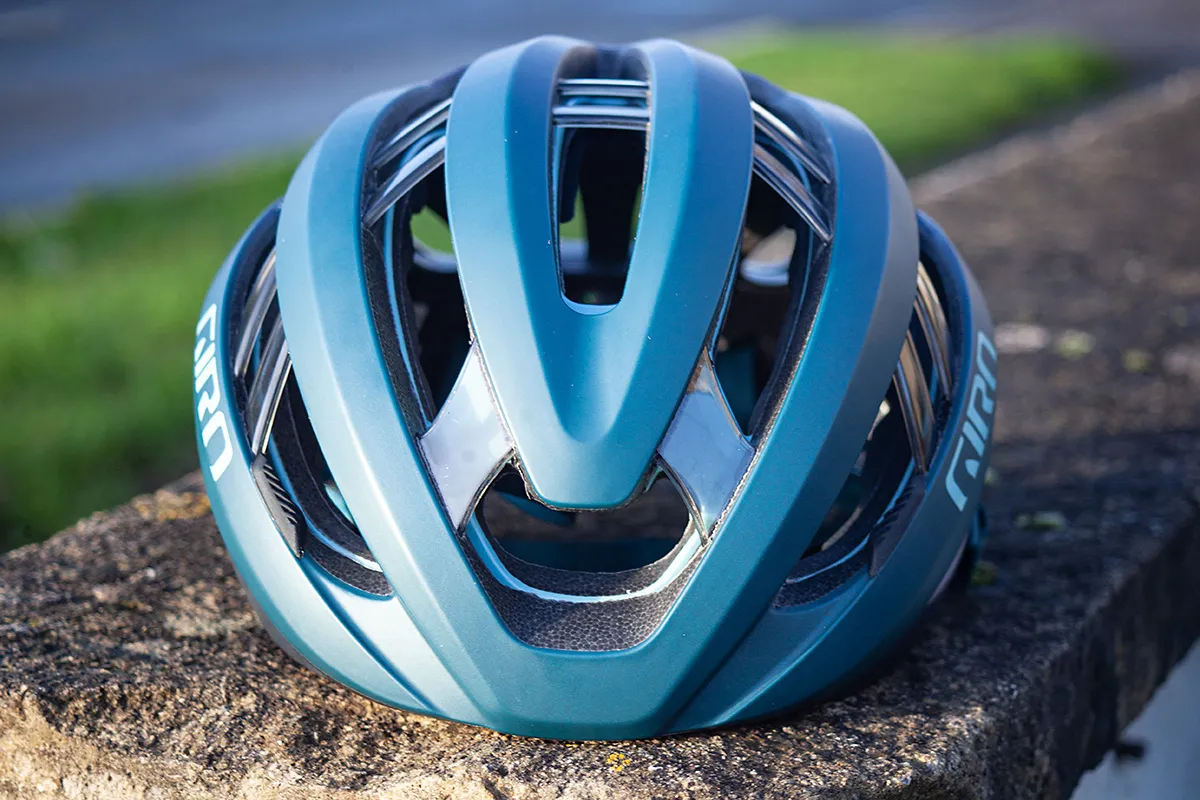
The Aries' low-volume design combines huge front vents and large exhaust ports with forward-facing vents that are a minimum of 20mm wide.
The single open vent in the front centre is 60mm wide by 30mm deep and the further five front-facing vents run the length of the crown.
At the rear, six large exhaust ports take care of helping expel the free-flowing air across the scalp.

Internally, it combines deep channels and a new herringbone pattern of cutaways to further reduce heat build-up.
The Aries' combination of venting is much more open and extensive, while the internal channels are also more comprehensive.
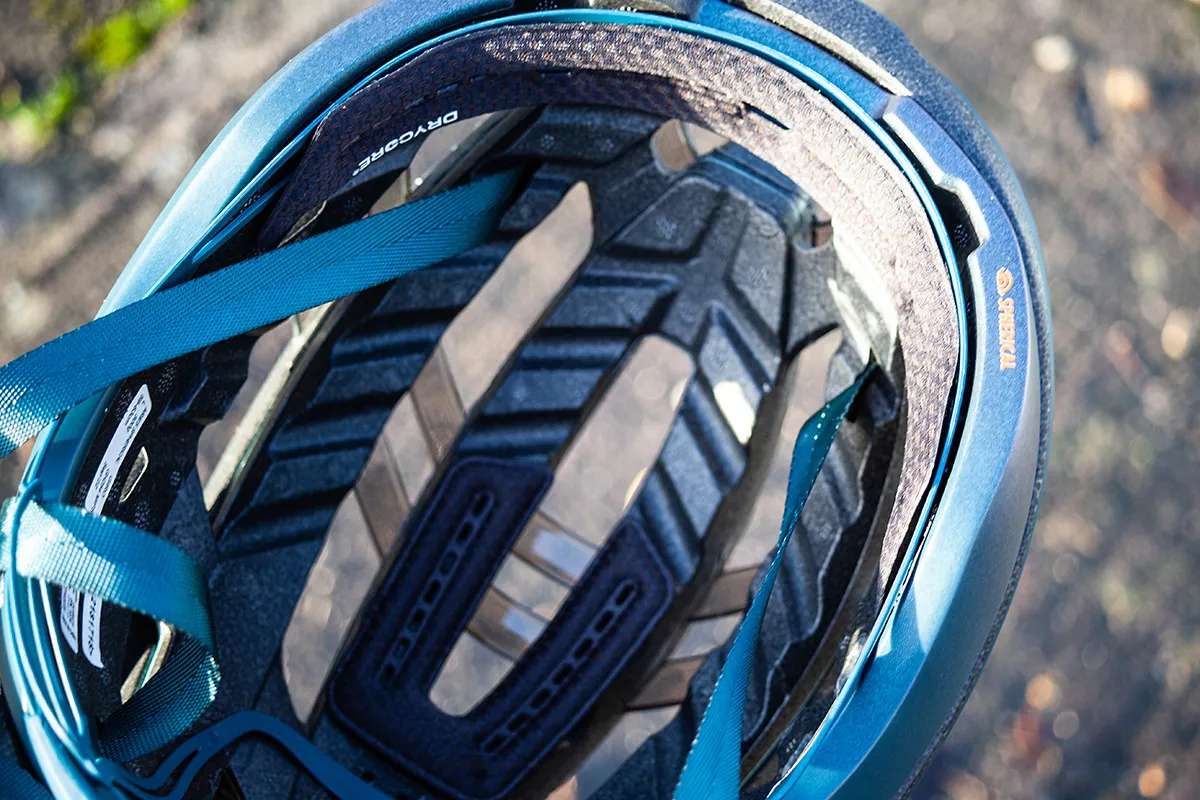
Giro claims a 2.3 per cent improvement in cooling performance over the Aether (which itself is 2 per cent more efficient than the Helios).
The total vent count for the Aries is 24.
Comfort
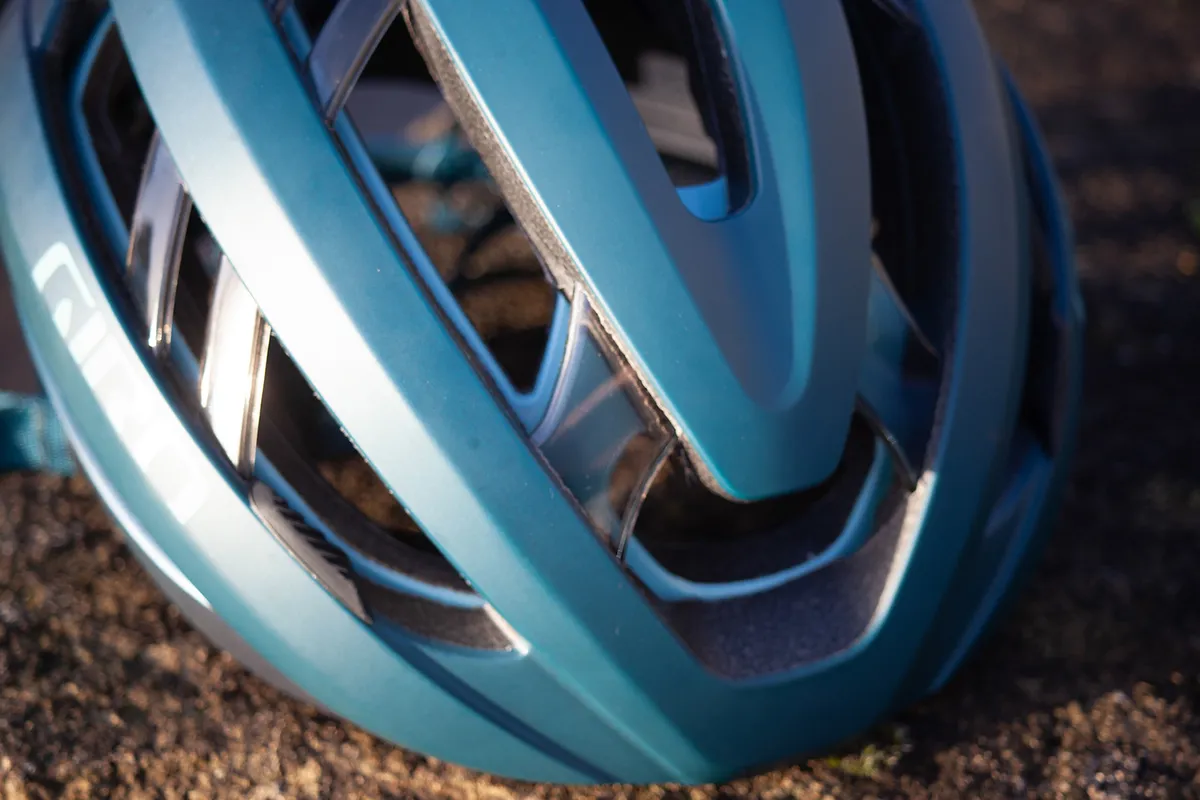
Giro says it has worked extensively on both refining the shape of the helmet and reducing the number of pads necessary for the design.
In fact, internally you’ll find only two pads, a U-shaped thin one at the crown and another, 30mm deep, that runs the full length of the brow.
Multiple pads can become both heat traps and moisture sinks, so Giro believes reducing these at the same time as improving airflow makes for a more comfortable helmet.
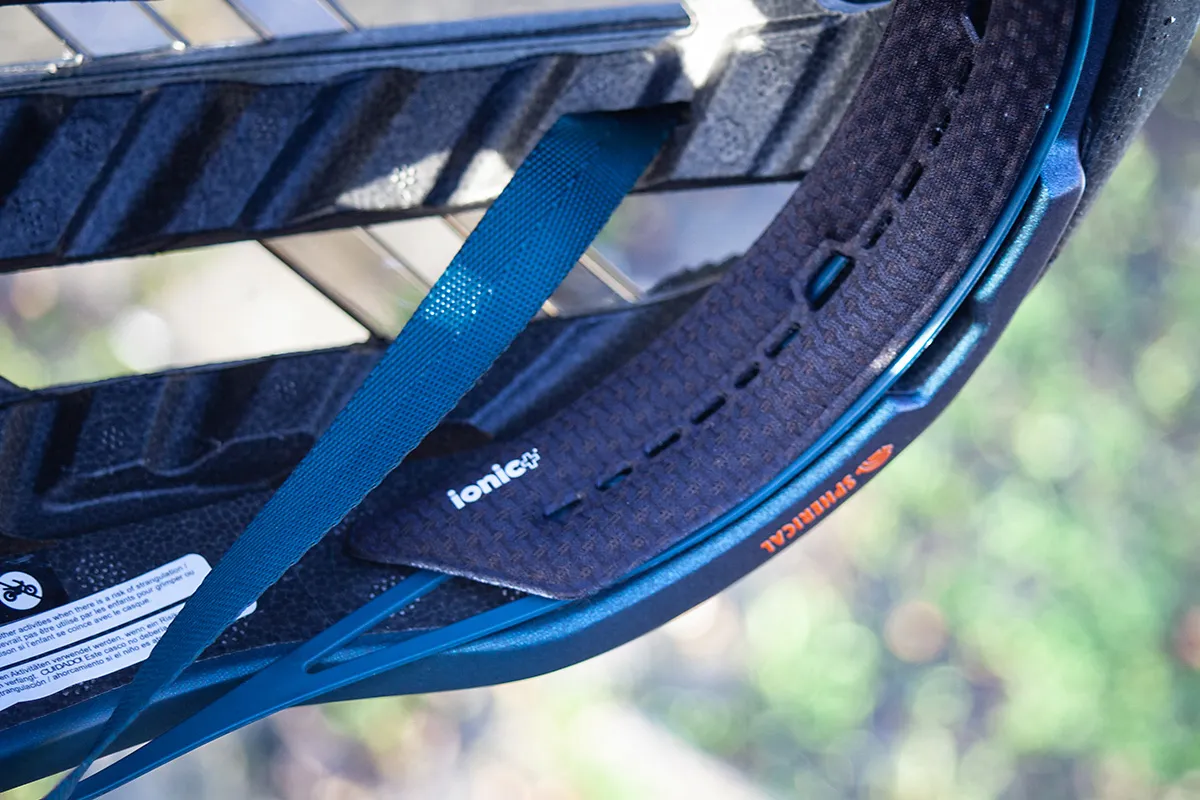
These pads are made from Giro’s new Drycore technology. This uses an internal silicone bead that creates a barrier and redirects moisture away from your brow according to the brand. If it works, it'll mean no more sweat running into your eyes when riding hard in the heat.
Adjustment is taken care of by Giro’s Roc Loc 5 Air fit system with 4cm of horizontal adjustment, along with volume control from the micro-adjusting dial.
Pricing and range details
The Aries is priced at $300 / €320 / AU$499 / £289.99 and in small, medium and large sizes.
It's available initially in six colourways: Anodised Matt Blue, Matt Anodised Harbor Blue Fade, Matt Black, Matt Carbon Red, Matt Coal Space Green/Black and Matt White.

